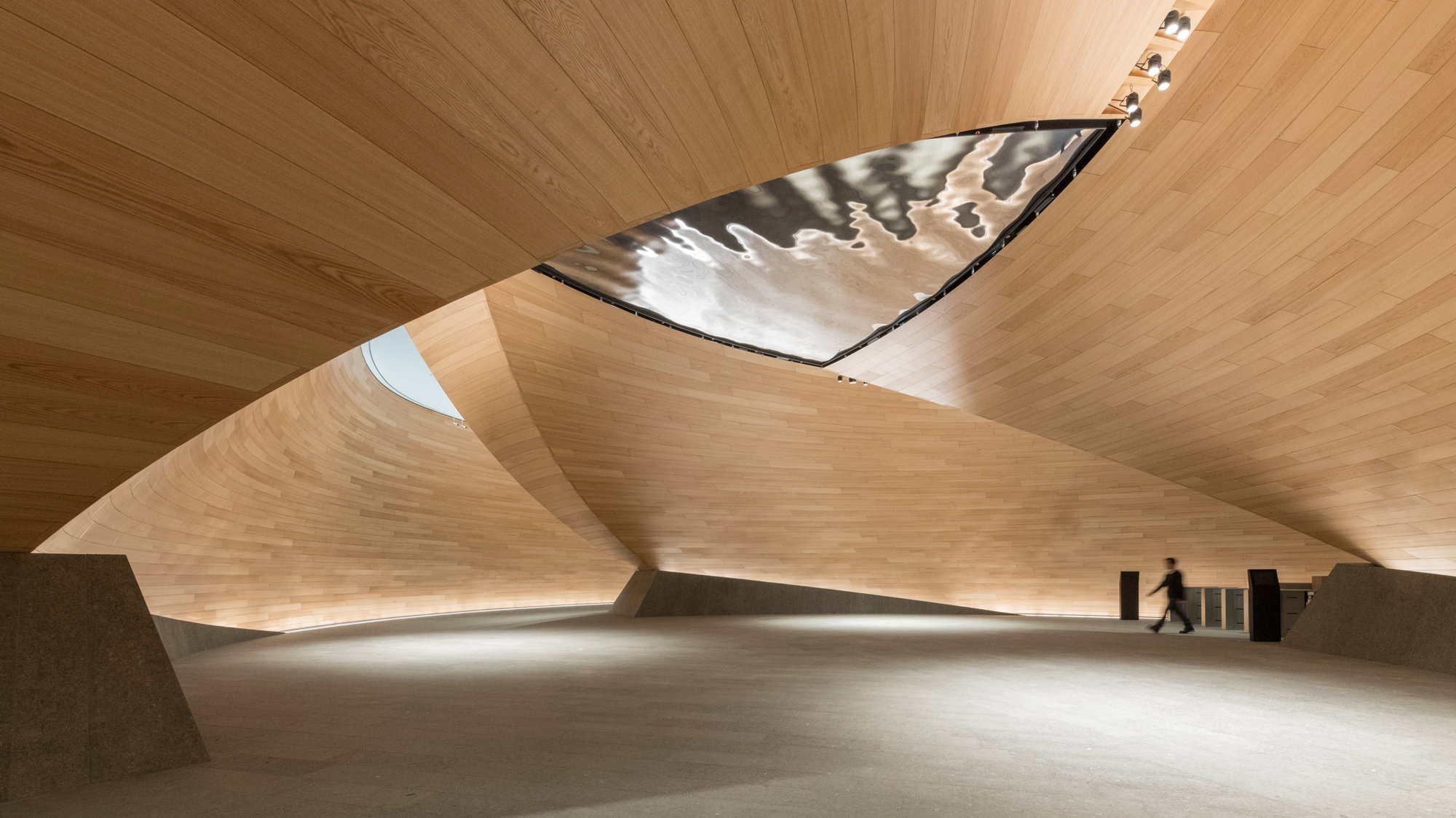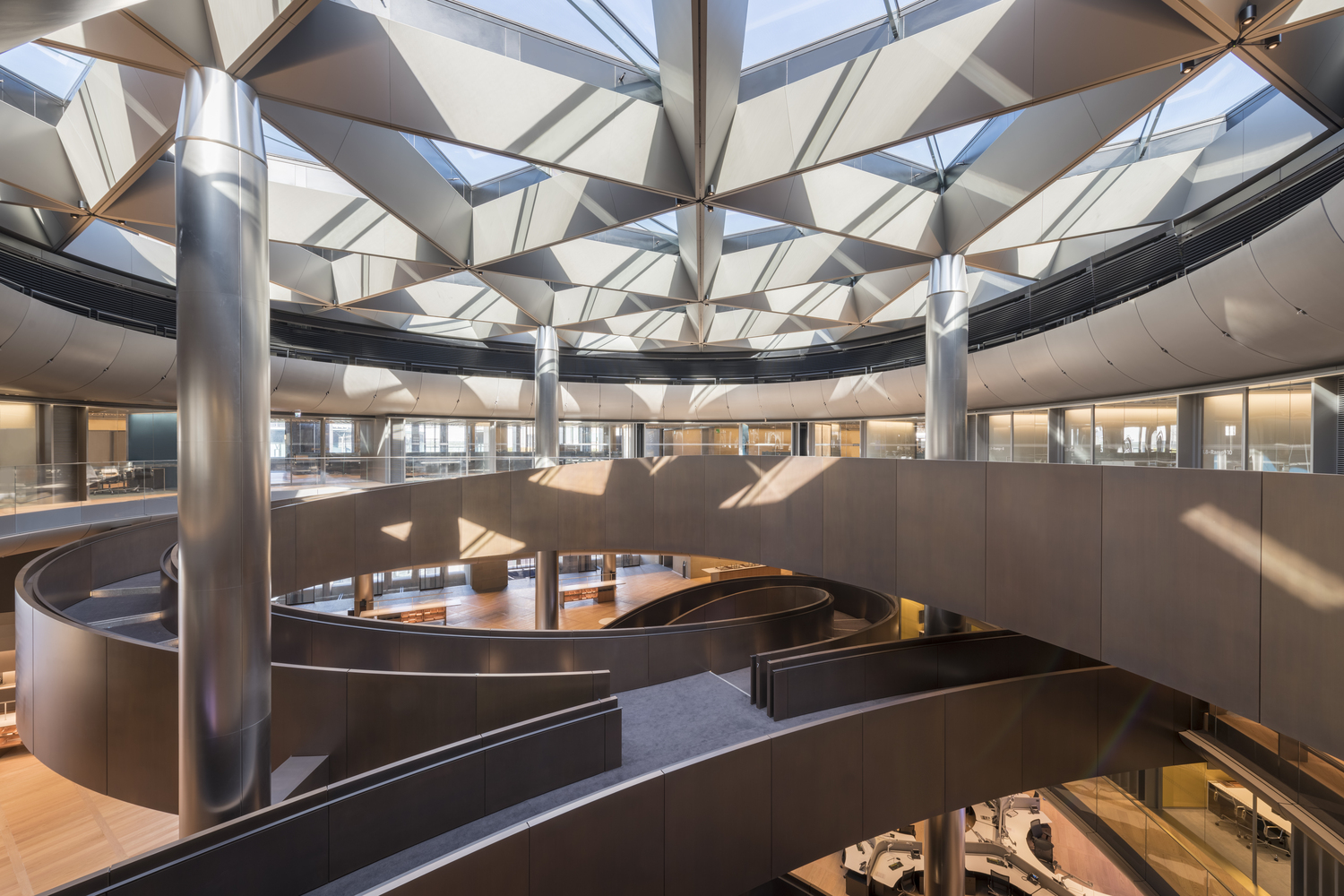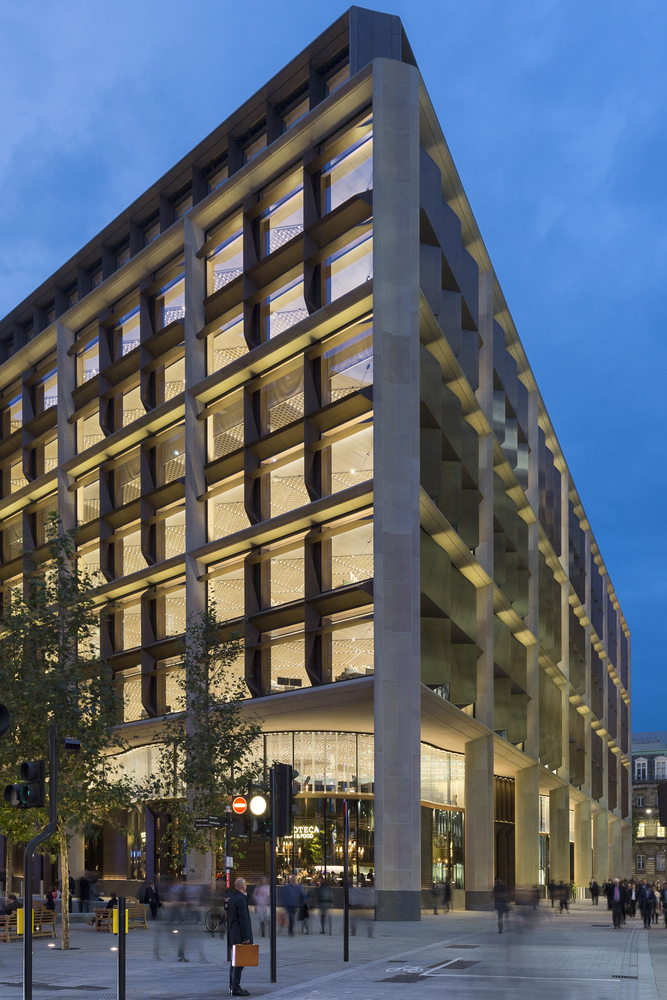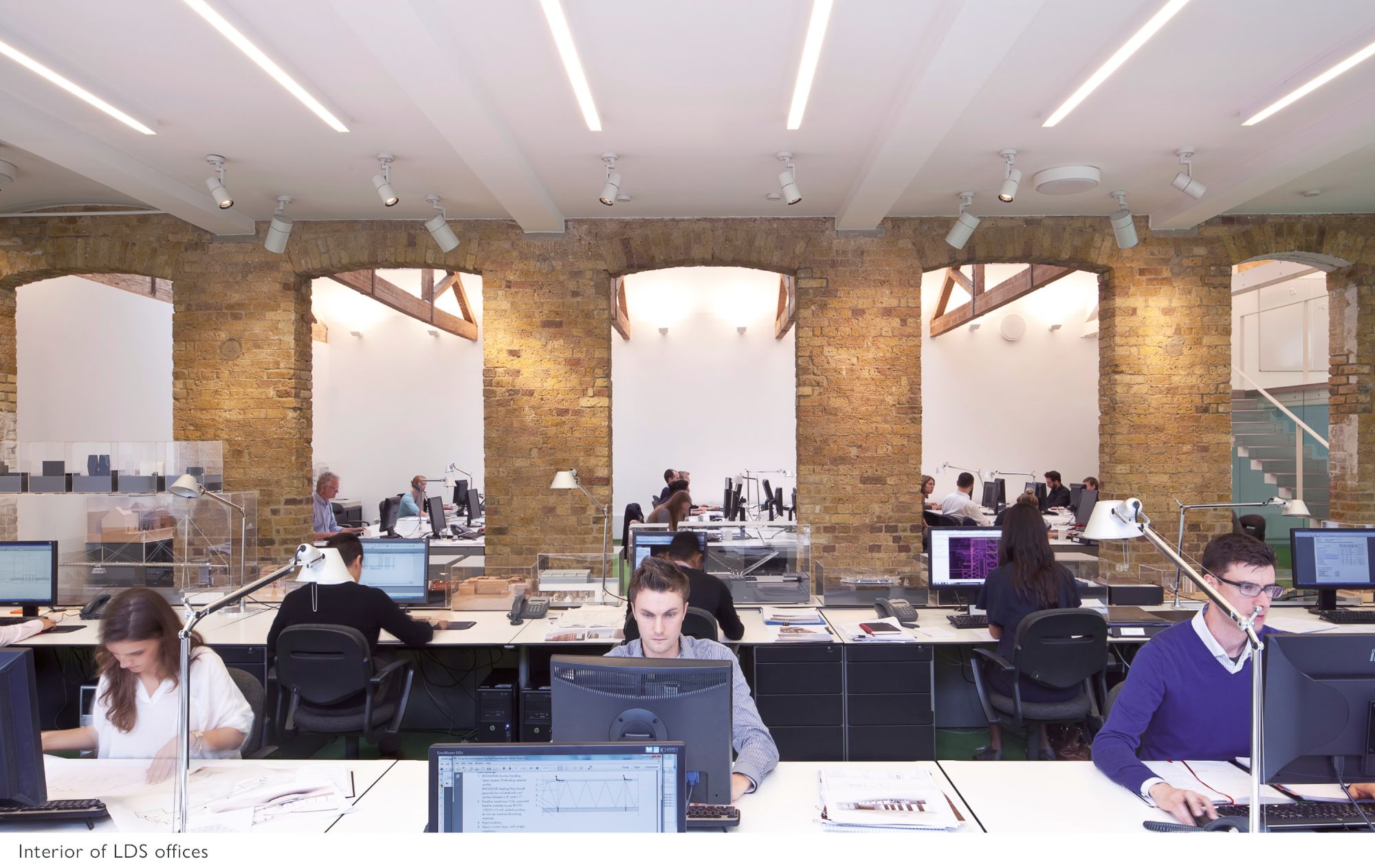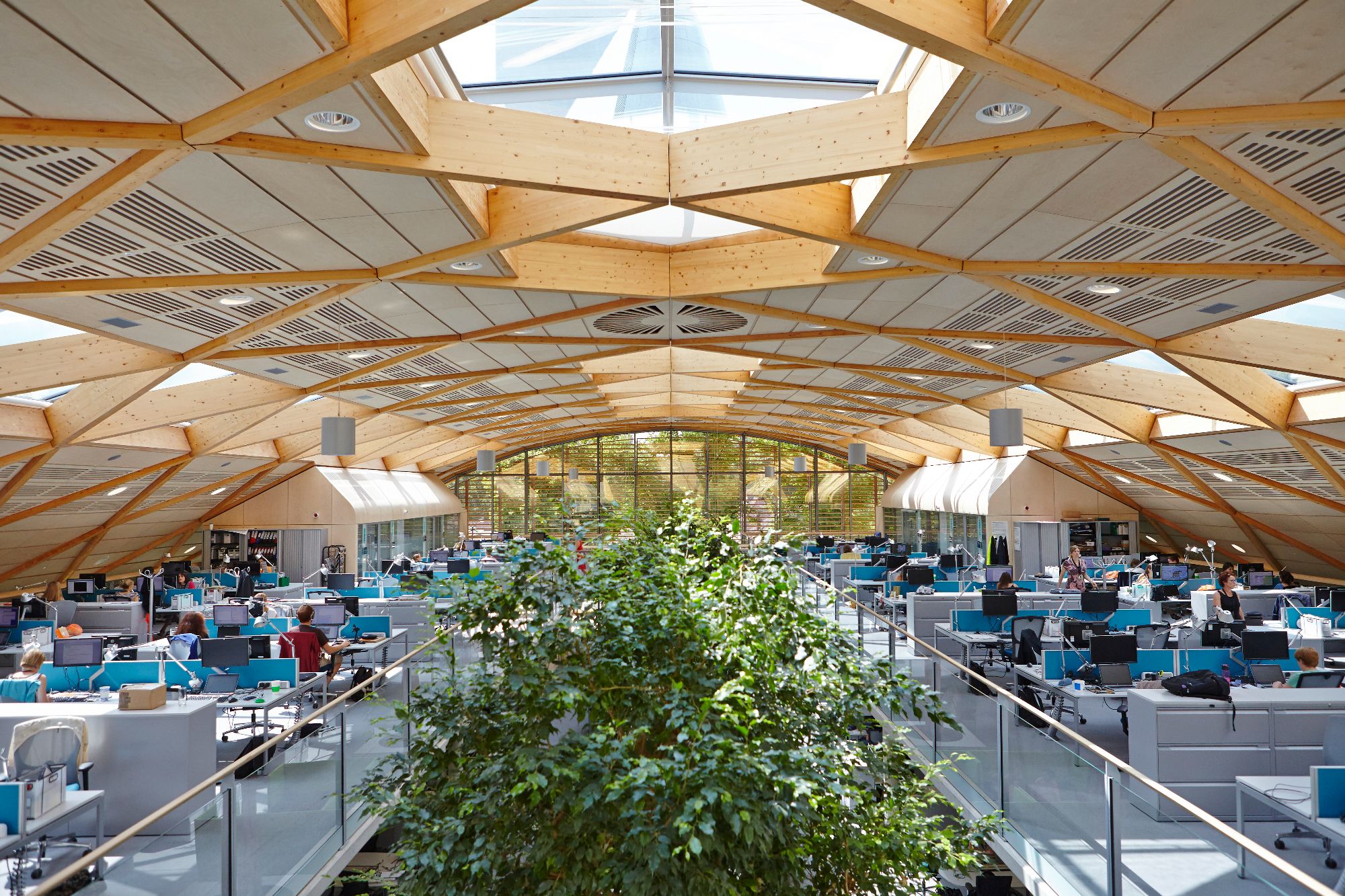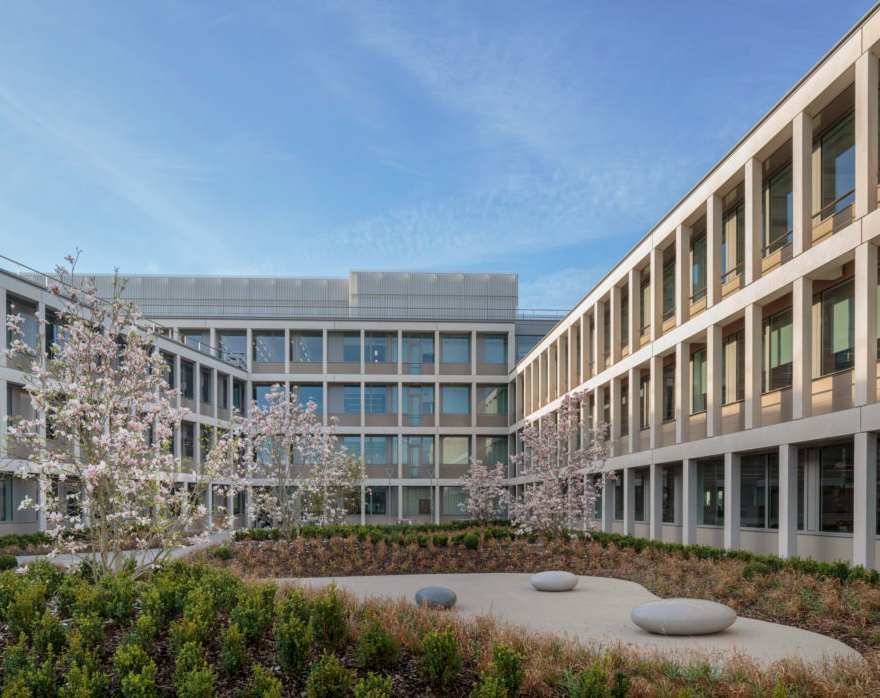Workplace
Bloomberg by Foster + Partners
Bloomberg by Foster + Partners will be presented at the AT Awards live finals on 17 September 2025. Learn more about the project below.
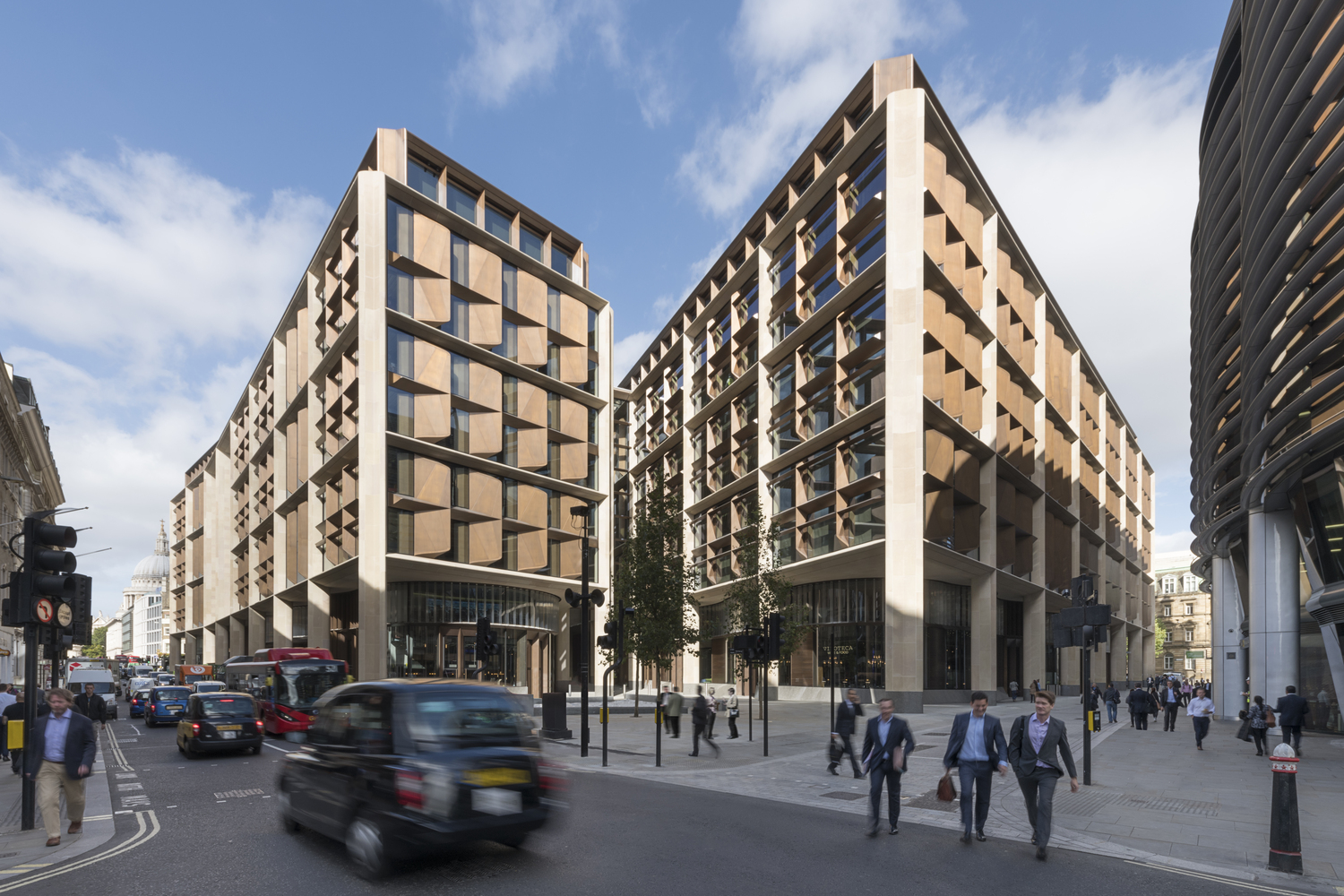
Bloomberg’s European headquarters occupies a full city block in the heart of the City of London and was designed by Foster + Partners as a long-term addition to the urban fabric. Completed in 2017, the development includes two buildings connected by bridges above a new pedestrian route that reinstates Watling Street. The scheme includes three public plazas and a retail-led pedestrian arcade at ground level, framed by a structural sandstone façade and bronze fins that also serve as part of the building’s natural ventilation system. The project integrates civic, commercial and cultural functions, and was delivered to the highest sustainability standards.
A key design challenge was meeting Bloomberg’s social and cultural ambitions, including support for local business and public art. The Bloomberg Arcade contains nine retail units and is animated by Cristina Iglesias’ three-part water sculpture, which references the historic Walbrook River that once flowed through the site. Technically, the project incorporated multiple innovative systems intended to set new benchmarks for performance in the commercial office sector, particularly around sustainability and wellbeing.
Since opening, the building has been adapted to meet evolving operational and workplace needs. Its flexible design has enabled reconfigurations of workspaces and collaboration areas to suit changes in staffing and usage. Workplace layouts have been modified to improve efficiency and support employee wellbeing, while further enhancements are underway in the adjacent South building to improve vertical circulation and internal connectivity.
Environmental performance continues to improve through ongoing system optimisation. Natural gas use has been reduced by over 53% in absolute terms and 68% per person, despite a 46% increase in occupancy. Electricity consumption per person has also decreased. These results reflect improvements to control systems, ventilation, and demand forecasting. Lessons from the project include the complexity of commissioning interdependent systems, with significant effort required to ensure they operate together effectively and deliver expected outcomes.



